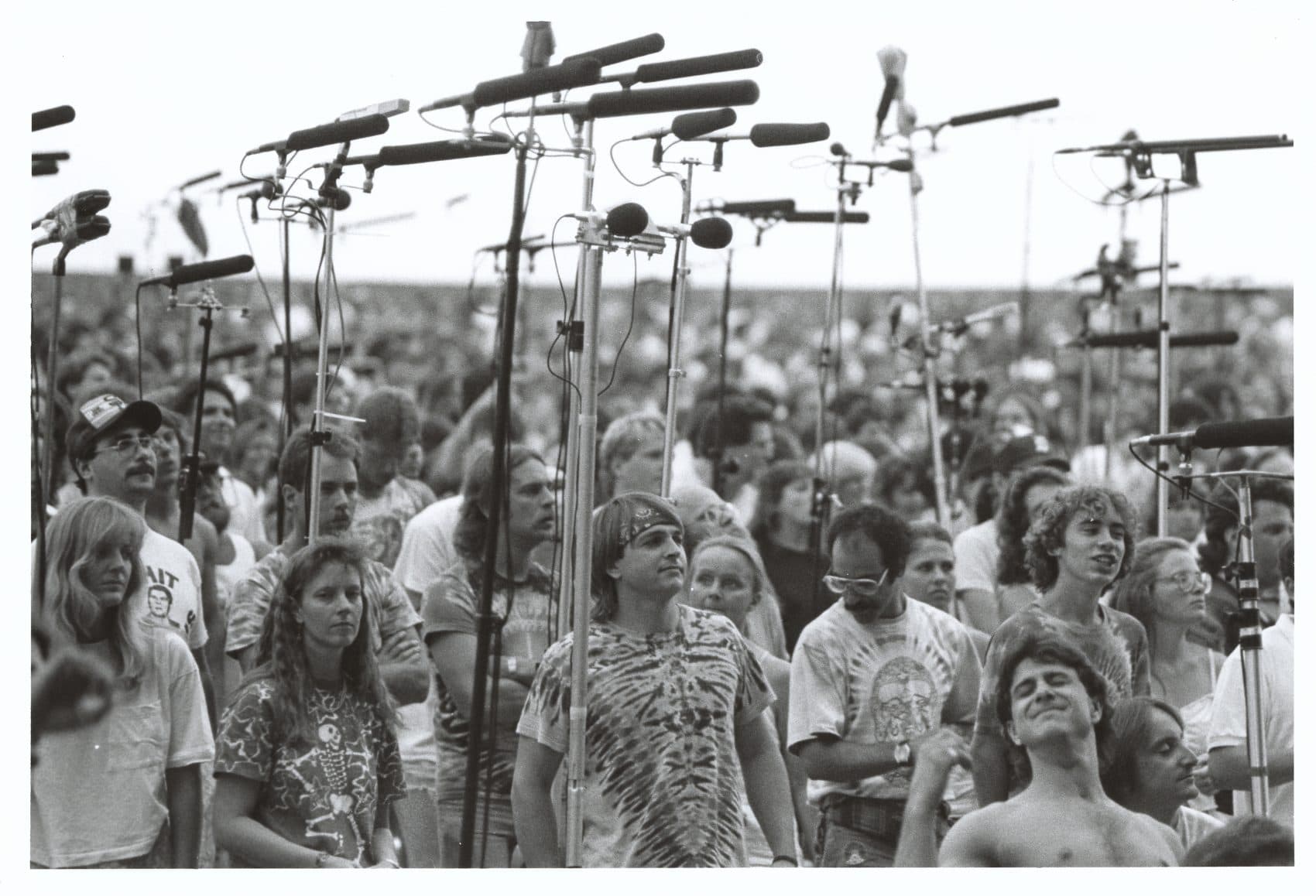Music Bootlegging 101

Grateful Dead fans at the taper’s Section at an outdoor venue.
There are many different terms being thrown around in the world of music bootlegging. If you are new to this world (like I was), you will see these terms on sites like Archive.org and will go on many tangents to understand what they mean. In this article I'll explain these terms.
Bootleg: a recording of a performance that is not officially released. More generally, the term bootleg is also used when describing a fake version of a product, but that's not the version we use here.
Taper: the person who recorded the performance.
Source: the hardware setup that is used to capture the performance. You'll often see the equipment name be prefixed with a code like AUD, SBD, etc.
- AUD: recorded by a member of the audience.
- SBD: recorded from the soundboard.
- CDR: recorded into a compact disc recordable.
- FM: taken from a radio broadcast, these are very lossy because of the nature of radio broadcasts.
- There are many more codes like these that I won't get into now, they warrant their own blog post at some point. AUD and SBD are the ones you'll see the most though.
Important note: SBD recordings will sound clearer but this does not make them objectively better. Many people (including myself) prefer good quality AUD recordings over SBD, since AUD captures the energy of the crowd better and gives you a sense of being there. You can get the best of both worlds though: enter matrices.
Matrix: when there are multiple sources (with different flaws) for the same show, you can mix them into a single better-sounding recording. Matrices often combine AUD and SBD sources, to have the clarity of the soundboard but add the dynamic range of audience recordings.
Lossless: a form of compression that has no data loss. This means you can compress, then decompress a file and end up with the exact original file.
- Common file formats: .FLAC, .WAV, .SHN (old)
Lossy: a form of compression that sacrifices some quality to make the file size smaller. Lossy compression algorithms use the human perceptual system to discard parts of the data that humans don't pay attention to. People who are really into music and audiophiles can often tell that a recording is lossy though, so in many communities lossy encodings are discouraged.
- Common file formats: .mp3
Lineage: different formats that the recording was encoded to before it ended up in its current form. An example lineage: DA-P1>coax>Midiman Audiophile2496>Soundforge 5.0>CdWave>FLAC
- As you can see, it starts with the hardware. Then it's transferred via a coax cable to a Midiman Audiophile audio interface. From there, it's loaded into a software called Soundforge 5.0, then into another software called CD Wave and then finally converted to a .FLAC file. Whew.
Tape Generation: Sometimes in the lineage of an older bootleg, you will see a number in brackets next to the cassette. This number denotes the generation of that tape. Back in the day when bootlegging was mainly done in the form of sharing cassette tapes, if you didn't want to lose your original (master) tape, you could copy its contents into another tape. That new tape would be referred to as a first generation tape, with the generation number increasing the further you go from the original tape.
AUD > Original Cassette > Cassette (1) > Casette (2) > FLAC
That should be everything. Next time you go through an artist's bootlegs, hopefully you'll be slightly less confused!
Get notified of future articles.
No spam, only new music articles. Unsubscribe anytime.